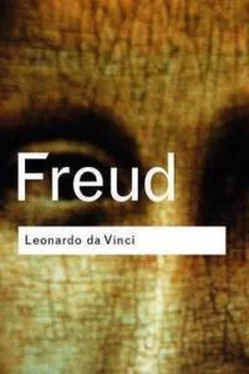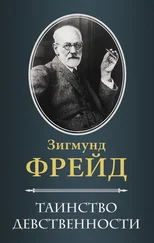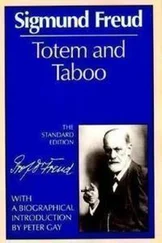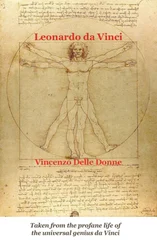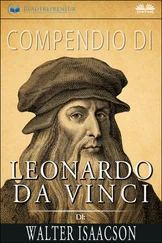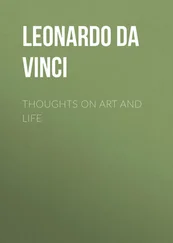F. Botazzi. Leonardo biologo e anatomico. Conferenze Florentine, p. 186, 1910.
E. Solmi: Leonardo da Vinci. German Translation by Emmi Hirschberg. Berlin, 1908.
Marie Herzfeld: Leonardo da Vinci der Denker, Forscher und Poet. Second edition. Jena, 1906.
His collected witticisms—belle facezie,—which are not translated, may be an exception. Cf. Herzfeld, Leonardo da Vinci, p. 151.
According to Scognamiglio (l. c. p. 49) reference is made to this episode in an obscure and even variously interpreted passage of the Codex Atlanticus: "Quando io feci Domeneddio putto voi mi metteste in prigione, ora s'io lo fo grande, voi mi farete peggio."
Merejkowski: The Romance of Leonardo da Vinci, translated by Herbert Trench, G. P. Putnam Sons, New York. It forms the second of the historical Trilogy entitled Christ and Anti–Christ, of which the first volume is Julian Apostata, and the third volume is Peter the Great and Alexei.
Solmi l. c. p. 46.
Filippo Botazzi, l. c. p. 193.
Marie Herzfeld: Leonardo da Vinci, Traktat von der Malerei, Jena, 1909 (Chap. I, 64).
"Such transfiguration of science and of nature into emotions, or one might say, religion, is one of the characteristic traits of da Vinci's manuscripts, which one finds expressed hundreds of times." Solmi: La resurrezione, etc, p. 11.
La resurrezione, etc., p. 8: "Leonardo placed the study of nature as a precept to painting … later the passion for study became dominating, he no longer wished to acquire science for art, but science for science' sake."
For an enumeration of his scientific attainments see Marie Herzfeld's interesting introduction (Jena, 1906) to the essays of the Conference Florentine, 1910, and elsewhere.
For a corroboration of this improbable sounding assertion see the "Analysis of the Phobia of a Five–year–old Boy," Jahrbuch für Psychoanalytische und Psychopathologische Forschungen, Bd. I, 1909, and the similar observation in Bd. II, 1910. In an essay concerning "Infantile Theories of Sex" (Sammlungen kleiner Schriften zur Neurosenlehre, p. 167, Second Series, 1909), I wrote: "But this reasoning and doubting serves as a model for all later intellectual work in problems, and the first failure acts as a paralyzer for all times."
Scognamiglio 1. c., p. 15.
Cited by Scognamiglio from the Codex Atlanticus, p. 65.
Cf. here the "Bruchstück einer Hysterieanalyse," in Neurosenlehre, Second series, 1909.
Horapollo: Hieroglyphica I, II. Μητἑρα δἑ γρἁφοντες … γὑπα ζωγραφοὑσιυ.
Roscher: Ausf. Lexicon der griechischen und römischen Mythologie. Artikel Mut, II Bd., 1894–1897.—Lanzone. Dizionario di Mitologia egizia. Torino, 1882.
H. Hartleben, Champollion. Sein Leben und sein Werk, 1906.
"γὑπα δἑ ἁρρενα οὑ φασνγἑνεσθαι ποτε, ἁιλἁ φηλεἱας ἁπἁσας," cited by v. Römer. Über die androgynische Idee des Lebens, Jahrb. f. Sexuelle Zwischenstufen, V, 1903, p. 732.
Plutarch: Veluti scarabaeos mares tantum esse putarunt Aegyptii sic inter vultures mares non inveniri statuerunt
Horapollinis Niloi Hieroglyphica edidit Conradus Leemans Amstelodami, 1835. The words referring to the sex of the vulture read as follows (p. 14): "μητἑρα μἑν ἑπειδἡ ἁρρεν ἑν τοὑτω γἑνει τὡων οὑχ ὑπἁρχει."
E. Müntz, 1. c., p. 282.
E. Müntz, 1. c.
See the illustrations in Lanzone l. c. T. CXXXVI–VIII.
v. Römer l. c.
Cf. the observations in the Jahrbuch für Psychoanalytische und Psychopathologische Forschungen, Vol. I, 1909.
Cf. Richard Payne Knight: The Cult of Priapus.
Prominently among those who undertook these investigations are I. Sadger, whose results I can essentially corroborate from my own experience. I am also aware that Stekel of Vienna, Ferenczi of Budapest, and Brill of New York, came to the same conclusions.
Edm. Solmi: Leonardo da Vinci, German translation, p. 152.
Solmi, 1. c. p. 203.
Leonardo thus behaves like one who was in the habit of making a daily confession to another person whom he now replaced by his diary. For an assumption as to who this person may have been see Merejkowski, p. 309.
M. Herzfeld: Leonardo da Vinci, 1906, p. 141.
The wording is that of Merejkowski, 1. c. p. 237.
The equestrian monument of Francesco Sforza.
The full wording is found in M. Herzfeld, 1. c. p. 45.
Merejkowski 1. c.—As a disappointing illustration of the vagueness of the information concerning Leonardo's intimate life, meager as it is, I mention the fact that the same expense account is given by Solmi with considerable variation (German translation, p. 104). The most serious difference is the substitution of florins by soldi. One may assume that in this account florins do not mean the old "gold florins," but those used at a later period which amounted to 1–2/3 lira or 33–1/2 soldi.—Solmi represents Caterina as a servant who had taken care of Leonardo's household for a certain time. The source from which the two representations of this account were taken was not accessible to me.
"Caterina came in July, 1493."
The manner of expression through which the repressed libidio could manifest itself in Leonardo, such as circumstantiality and marked interest in money, belongs to those traits of character which emanate from anal eroticism. Cf. Character und Analerotik in the second series of my Sammlung zur Neurosenlehre, 1909, also Brill's Psychoanalysis, its Theories and Practical Applications, Chap. XIII, Anal Eroticism and Character, Saunders, Philadelphia.
Seidlitz: Leonardo da Vinci, II Bd., p. 280.
Geschichte der Malerei, Bd. I, p. 314.
l. c. p. 417.
A. Conti: Leonardo pittore, Conferenze Fiorentine, l. c. p. 93.
l. c. p. 45.
W. Pater: The Renaissance, p. 124, The Macmillan Co., 1910.
M. Herzfeld: Leonardo da Vinci, p. 88.
Scognamiglio, l. c. p. 32.
L. Schorn, Bd. III, 1843, p. 6.
The same is assumed by Merejkowski, who imagined a childhood for Leonardo which deviates in the essential points from ours, drawn from the results of the vulture phantasy. But if Leonardo himself had displayed this smile, tradition hardly would have failed to report to us this coincidence.
Читать дальше
